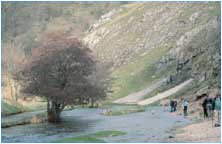|  This
sector analysis describes the characteristics and scale of the
tourism, recreation and access sector, its impact upon the delivery
of nature conservation objectives in England, English Nature?s
objectives for the sector and priority actions for the period
2000-2003. This
sector analysis describes the characteristics and scale of the
tourism, recreation and access sector, its impact upon the delivery
of nature conservation objectives in England, English Nature?s
objectives for the sector and priority actions for the period
2000-2003.
It examines the key socio-economic and political factors that
shape the tourism, recreation and access sector; it includes a
brief analysis of the economic impact of the sector and the interaction
with peoples? lifestyles. It describes in outline the roles of
the key players within the sector: the government agencies, National
Park and local authorities, the numerous representative bodies
and the various special interest groups.
The paper analyses the nature conservation impacts of the tourism,
recreation and access sector, both positive and negative. The
annexes summarise the types of impacts which can result from a
range of tourist and recreational activities, whilst section 4
acknowledges that there can be gains for biodiversity from tourism
and recreation in terms of giving people opportunities to appreciate
wildlife and enhancing the natural environment through initiatives
associated with people?s enjoyment of the countryside. Although
the interaction between tourism/recreation and nature conservation
occurs across all Natural Areas it is in coastal zones and close
to towns where continued growth in the amount of tourism and recreational
activity is likely to occur and where the greatest amount of management
intervention by English Nature will be required.
|

